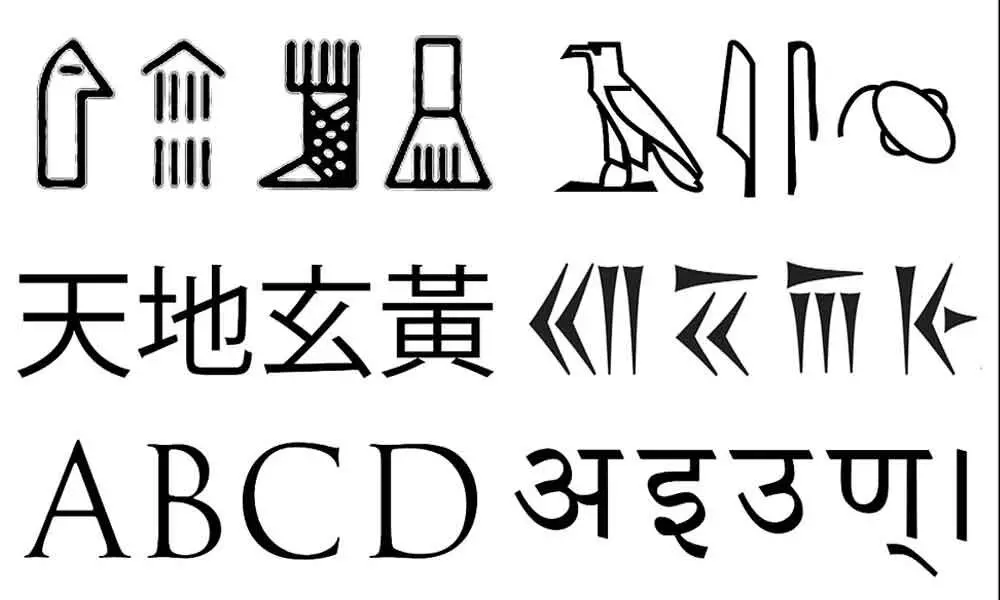How writing methods evolved over time

Representational Image
The ancient Greek Philosopher Plato, in one of his legendary 'Dialogues' refers to God Theuth inventing the system of writing, and conveying his discovery to the king Thamma, as having the power to 'make Egyptians wiser… improve their memories;
The ancient Greek Philosopher Plato, in one of his legendary 'Dialogues' refers to God Theuth inventing the system of writing, and conveying his discovery to the king Thamma, as having the power to 'make Egyptians wiser… improve their memories; for it is an elixir of memory and wisdom.' Writing is a method of human communication that is used to convert language into symbols. Unlike computer languages, it is only a system which can render language into a form that can be understood by fellow human beings at other places and times.
One remembers being initiated into writing, in a brief domestic function, during which one was made to inscribe letters on a slate, with a slate pencil. Thereafter, upon joining school, one graduated to using pencils and, for colouring pictures, crayons of different colours. Subsequently, one was advanced to use 'inkpots' with pinned sticks leading to 'fountain pens'.
With the emergence of human societies, requirements such as the recording of history, preservation of culture, compilation of knowledge and information through curricula and lists of texts, demanded advanced systems of writing.
Abjads, or systems using the marking of consonant phonemes, date back to the hieroglyphics, or sacred carvings, of ancient Egypt. Earliest known hieroglyphics date back to the second half of the fourth millennium BCE. The cave paintings and petroglyphs of prehistoric civilisations were some of the precursors of subsequent systems of writing, though not considered writing in the strict sense, as they did not directly represent language.
The transition, from drawing/pictography to writing, was more or less synchronous with hunter-gatherer societies developing agriculture and creating encampments for settling. The farmers used clay tokens with carvings to help describe the property, or the nature of transactions, in commodities such as land, grain and cattle. Another method of communication, especially among the Native American tribes, used to be the sending of smoke signals to convey messages. Chinese soldiers, stationed along the Great Wall of China, also used the same system. To this day, the College of Cardinals uses smoke signals to signify the completion of the process of electing a new Pope.
An alphabet is a set of symbols, each of which represents a phoneme of the language concerned. The first known civilisation to create a purely phonetic system, completely independent of a pictographic or syllabic system, was the Phoenicians. The structure of a system of writing is similar to the speech it represents in matters such as lexicon and syntax. The product is called a 'text' and the person for whom the communication is intended a 'reader'.
Palm leaves were used as writing material in the Indian subcontinent and Southeast Asia around the fifth century BCE. The manuscripts were made out of dried palm leaves and the practice subsequently spread to other regions. This system continued till the 19th century BCE until the printing presses appeared and replaced handwritten manuscripts. One of the oldest surviving such manuscripts is a complete treatise in Sanskrit on Shaivism dating back to the 9th century was discovered in Nepal and is now available in Cambridge University library.
The second most widely used script in the world is Chinese, also known as hanzi, kanji, or hanja. A logogram is a written character which represents a word or morpheme. A vast number of logograms are needed to write Chinese characters. The characters of this writing script are considered logograms and used in several different languages across Asia, including Chinese, Korean, and Japanese.
Like other Semitic scripts Arabic is written from left to right. The Arabic alphabet was probably the prototype of the Brahmi script of India, comprising the first drawn representations of the natural world and dating back to 30 to 40,000 years ago, when humans started painting and graffitiing rocks and cave walls.
The practice of 'coding' letters is also quite common primarily in order to maintain the secrecy of communications which the recipient is required to 'crack' or decipher. Techniques such as the Morse code or are also used for the purpose of sending messages from one point to another. Exchange of communications between railway stations, ships at sea and, telegraphic offices, at least in earlier days, (to send what were known as 'telegrams') made extensive use of that.
Thanks to Louis Braille, a remarkably effective technique for blind people to learn to read and write came into being. Another handy method of increasing the speed of taking down dictation is the set of symbols known as 'shorthand'.
The nearly global spread of digital communication systems such as e-mail and social media has made writing an increasingly important feature of daily life, where they mix with older technologies like paper, pencils, whiteboards, printers, and copiers.
Communication technology has advanced to the stage where even interstellar communication, of transmission of signals between planetary systems, has been attempted. The Search for Extraterrestrial Intelligence (SETI) project has been, for several decades now, conducting a search for signals, possibly emanating from extraterrestrial life, located outside the solar system.
While radio frequencies of the electromagnetic spectrum are used by SETI, it is also been proposed that higher frequency signals, such as lasers operating at visible light frequencies, may also prove to be a fruitful method. One has to wait and see where this exciting cosmic search leads humanity to. The activity of writing has the effect of transforming knowledge allowing, as it does, human beings to external is their thinking in forms that are easier to reflect on.
Letters, when put together in a structured form, constitute words which, in turn, when used in accordance with certain rules, form sentences. In the absence of order, form and structure, a combination of letters, or groups of them, will make no sense. If, however, an endless permutation and combinations of letters and groups is attempted, a stage can theoretically be reached when words and sentences begin to appear.
A purely theoretical, and somewhat light-hearted, calculation shows that the probability, of a monkey typing out Shakespeare's plays, by pecking away at the key board of a laptop, is as small as 1/10 raised to the 12,00,0000th power!
As a three- month- old premature born baby, I was placed in the hands of Mahatma Gandhi when he had come to Chennai to lay the foundation stone for the Andhra Mahila Sabha founded by Durgabai Deshmukh. My mother and Durgabai were great friends and classmates in school in Kakinada earlier.
I was therefore named Mohan Das, subsequently changed to Mohan. That of course is something I have always have been proud of. It was only much later, that I realised that I had another characteristic in common with the Mahatma–bad handwriting! Gandhiji, himself, had a poor opinion of the importance of good handwriting, until he went to South Africa where, upon seeing the beautiful handwriting of lawyers who were his colleagues, he felt bad about his weakness.
Mine, in fact, continues to be pretty bad – bordering on the illegible. Much like the notorious prescriptions made out by doctors. So much so that, when I was Collector Guntur, bets used to be laid on what I had written on file, and a separate section had been put in place, merely in order to decipher what I had written; headed by a person who had the courage to come to me for clarification!
(The writer is former Chief Secretary, Government of Andhra Pradesh)
(The opinions expressed in this column are that of the writer. The facts and opinions expressed here do not reflect the views of The Hans India)










